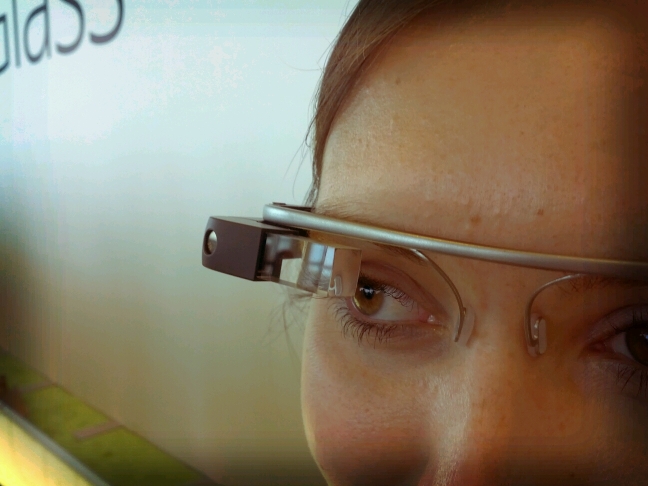Xerox researcher examines how emerging technology works in real life, and imagines a future with augmented reality.
By Matthew Shreve
I am computer scientist at the Xerox Research Center Webster in New York, working in the area of computer vision. As a researcher, it is part of my job to get familiar with new technology and imagine where it could take us. Experimenting with new technology is fascinating, but it can be awkward as well; like when I got bewildered looks from fellow supermarket shoppers recently while wearing Google’s new “augmented reality” (AR), head mountable display. You know it as Google Glass.

At Xerox, we are developing data analytic platforms that compile information from these devices to help understand human behavior, and automate all sorts of processes. This area of research is advancing quickly as high-resolution, low-cost cameras and sensors proliferate, and the cost of storing video and other media drops.
In general these “sensors” supplement our eyes (and sometimes ears) with additional information. In the case of Google Glass, it provides a user with a virtual “monitor.” Apps such as email or video recordings can be displayed in the monitor by either swiping the touch-sensitive frame, or by using voice commands. In contrast, another product called Meta Pro is a full-view AR headset that aims to bridge the gap between fully immersive virtual reality tools such as the Oculus Rift and (relatively) more subtle wearable devices such as Google Glass.
But back to the awkward grocery store trip. Instinctively, I wanted to remove and hide the glasses in my pocket within seconds of the first disapproving look from a fellow shopper. Instead, I managed to collect about 10 minutes of video data using the embedded camera on the front of the device.
As a researcher (and an avid science-fiction reader), it is very exciting to speculate on the possibilities that this technology will allow. Will we use it to navigate through a city we have never been to? Looking through Glass, the building you are heading toward could be presented in false color and projected at scale through objects blocking your view, letting you see around corners.
Or think about visiting a museum. Supplemental information about a painting you’re looking at can be presented alongside the real thing, making it easier to learn. How about when you forget someone’s name at a party and facial recognition software provides it to you?
It is interesting to think that eventually, seeing these devices being used in public may be as common as seeing someone text on their smartphone. But considering that Bluetooth earpieces still get glances even after several years of being on the market, it should also be interesting to observe the colossal marketing job that will be required by companies like Google to make wearing a device like this socially acceptable.
Matthew Shreve has 12 pending U.S. patents. He currently works in video analytics applied to surveillance technologies. His research interests include computer vision, image processing, pattern recognition, and artificial intelligence applied to facial motion analysis and surveillance applications.




Thanks Matthew for this article.
It´s really fascinating how this technology is to change a simple daily routine …
I´m expecting its implementation, definitely a new age will start.